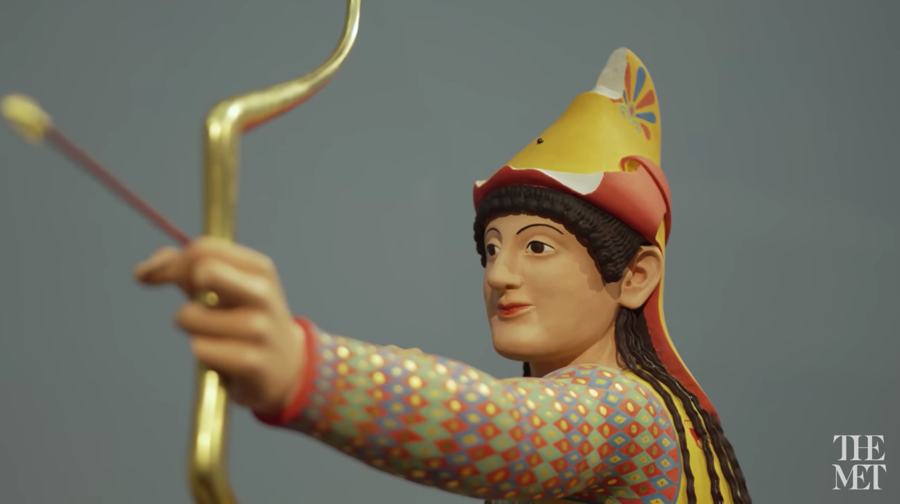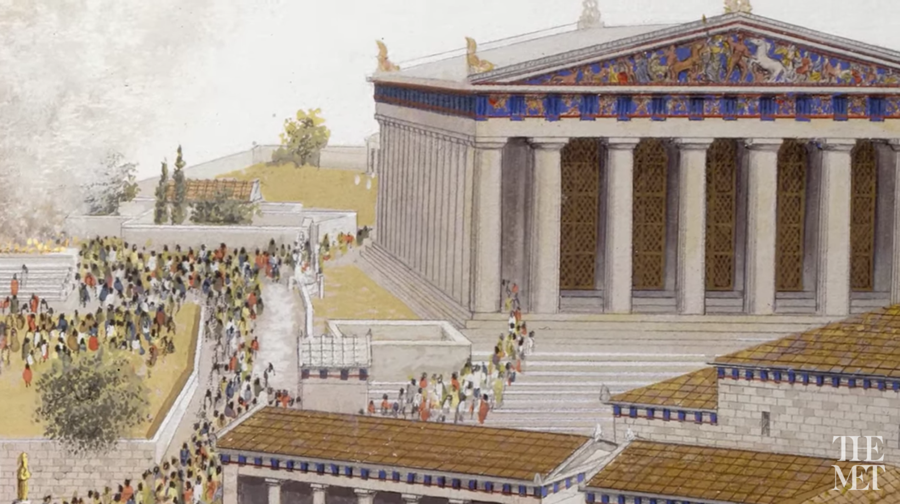“If ever a person from antiquity would enter a modern museum, a collection of ancient sculptures, marble sculptures,” muses archaeologist Dr. Vinzenz Brinkmann, “he would feel like entering a world of ghosts.”
He and archaeologist Dr. Ulrike Koch-Brinkmann have analyzed polychromy in ancient Greek and Roman sculpture for decades. Their 2022 exhibition at the Metropolitan Museum of Art in New York City, Chroma: Ancient Sculpture in Color, showcases vibrantly painted replicas that are based on their findings.
The pieces represent “solid proof that ancient Greek and Roman artworks were brightly painted,” and did not look like the time and weather-faded versions that we see in museums today.
“Our research process is a process of approximation. We never will find the full truth. We have no time machine. It is simply a process in order to be as correct as possible.”
Included in the exhibit is “a new reconstruction of The Met’s Archaic-period Sphinx finial, completed by The Liebieghaus team in collaboration with The Met.” A brightly adorned replica of an archer from the west pediment of Temple of Aphaia, below, is also on view.
In the video above, The Met explores The Modern Invention of Ancient White Marble and the perceptions and misconceptions surrounding Greek and Roman sculptures and architecture.
Enjoy a second video feature from the exhibit, below: The Met looks at how the team “chases color” on these relics so that they can create more scientifically accurate versions for today’s viewers.
“Scientific analyses, photographs with ultraviolet and infrared light, false-color photographs, and archaeological comparisons allow an almost complete reconstruction of the elegant designs in luminous and precious natural colors. Information is missing regarding additional detailing, such as fine lines subdividing the feathers, which may have been the final step in the original painting process.”
Explore The Chroma AR experience on a smartphone and see more exhibition objects online.
Watch these related videos next:
• Installing massive statues with engineering and care at the Met
• Moving and restoring an ancient Greek mosaic
• The Great Pyramid of Giza was bright white & highly polished
Bonus: A Vault of Color: Protecting the World’s Rarest Pigments.
Curated, kid-friendly, independently-published. Support this mission by becoming a sustaining member today.









